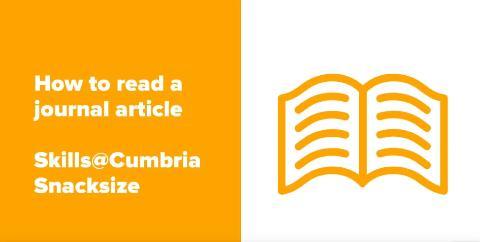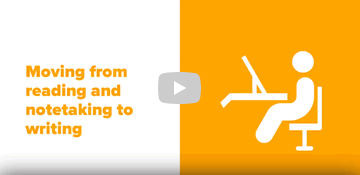This section and the following one on note taking will look at how to get the best from your reading.
You have your list of possible texts to use. How do you choose the most important ones and how do you gain that in-depth knowledge of these texts?
Reading environment
- Read in an environment that enables you to focus on your reading. You might need to experiment to find the best for you.
- Take regular breaks and exercise.
- Revisit your previous reading after a break to check your understanding.
- Park your thoughts overnight to ‘mature’ in your mind
Do not initially read cover to cover
Scan key sections of the item to get an idea of content.
In books – check contents lists, chapter headings, chapter summaries and subheadings. Use the index to find keywords or use the ‘search within’ option in ebooks.
For articles – read the summary or abstract and the conclusion to decide if it is worth reading the rest.
Then once you have decided it is worth reading it in more depth
- Skim read through quickly without making notes to get a basic understanding.
- Read more of the text to deepen that understanding.
- Use a ruler or pencil to keep your eyes moving at a good pace down the page.
- Read the first and last lines of each paragraph to get a basic framework of the text. These often signpost the main points.
- Read a chunk of text (a paragraph or a page) before starting to take notes.
- As you read think how you might use this in your writing and how it compares with other texts. See our next section for tips on notetaking to help you with this.
The texts you are expected to read at University are often complex and may contain challenging ideas, so it is likely that reading will take you longer than when you read for pleasure. Your reading speed will increase as you become more familiar with the subject.
Reading journal articles
Most journal articles begin with an abstract that gives you a summary of the article, followed by headed sections as follows:
- Introduction - Outlines the context and purpose of the research
- Literature Review - An overview of previous relevant research on the topic
- Methodology - The methods and data collection tools used in the study
- Results - The main findings and data obtained as part of the research
- Discussion - Considers the significance of the findings in relation to existing literature
- Conclusion - Restates the key outcomes of the research and makes suggestions for future studies
You may find it easier to read a journal article by beginning with the abstract and then reading the introduction and conclusion. This will give you an overview of the aims and findings of the research before you dive into the detail. The video below contains more tips for reading journal articles:

Keep track of your reading
It's easy to get lost in the literature and so it's important to develop a system that allows you to keep tabs on what you've read and what you found within. A Literature matrix is a table that allows you to capture key information from each source and helps you gain an overview of the research on your topic.
Our tutorial below provides a little more detail about getting the most from your reading.












